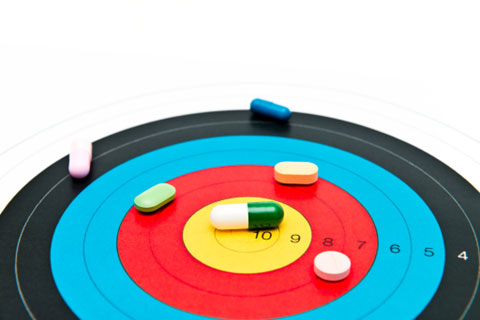Drugs are understandable when you think about them the right way!
Drugs are chemicals. They are like all other chemicals except that humans make a value judgement that a particular chemical (drug) will effect a desired change in a living organism. However, it’s important to note that a drug does what it does and there is no perfectly specific drug. So, drug effects always represent a mosaic of chemical interaction and effects. Each drug has properties that we humans hope will bring benefit to other humans. Those are the desired effects, but every drug produces effects other than the desired effect. Those are called side effects. But the drug doesn’t care – it just does what it does. In fact, often, what is a desired effect in one therapeutic setting, may be a side effect in another.
As pharmacologists and physicians interested in treating patients with drugs, we are interested in several properties that all drugs have. These include the mechanisms by which the desired objective is induced, pharmacodynamics, the mechanisms by which the drugs may induce side effects, toxicology, and the mechanisms by which the body distributes and clears a drug from the body, pharmacokinetics. Put simply, we are interested both in what the drug does to the body and what the body does to the drug.
Because drugs are chemicals and chemical reactions depend on collisions between two or more chemicals, drug effects are concentration dependent. We adjust the concentration of a drug in the body by adjusting the dose. All effects of drugs, with the possible exception of allergic reactions, are dose dependent. Therefore, we are interested in the doses that produce a desired effect and the doses that may produce undesired effects, or adverse events (side effects). A drug that produces a desired effect at a much lower dose than the dose required to produce an adverse event is usually considered a better drug. When we assess the difference between the dose that produces a desired effect and a dose that produces an adverse event, we are now analyzing a drug performance in a sophisticated way, and we are thinking about the term therapeutic index. This is the key parameter that you should always be thinking about when you use a drug.
On This Episode We Discuss:
- What is a receptor?
- The amazing power of a single idea – receptor biology
- Drugs do what they want
- We are interested in two drug properties – pharmacodynamic and pharmacokinetic
- What is therapeutic index?
- Pharmacodynamics and pharmacokinetics
- Drug effects are concentration dependent
- Drugs are understandable when you think about them the right way
Watch on YouTube:
The host of the show is Dr. Stanley Crooke, a scientist, a physician, an entrepreneur and the father of antisense technology. Dr. Crooke is responsible for driving the development of antisense or ASO technology, an RNA-targeted technology responsible for the commercialization of three best- and first-in class medicines and more than 40 drugs in development. In 2020, Stan formed n-Lorem to use this powerful technology to develop experimental personalized ASO medicines for nano-rare patients (1 to 30 patients worldwide) for free, for life.
Credits
Hosted by: Dr. Stan Crooke.
Videographer: Jon Magnuson of Mighty One Productions.
Producers: Kim Butler, Colin Delaney, Kira Dineen, Jon Magnuson, Andrew Serrano and Amy Williford
More from n-Lorem:
See what else we are up to on Twitter, Instagram, Facebook, LinkedIn, YouTube and our website, nlorem.org. If you enjoy this episode, please rate and review us, as it helps others find our podcast. Questions/inquiries can be sent to [email protected].
Listen to our next Intro to Medical Science episode

We cannot do
this alone
Together we are changing the world—
one patient at a time
We hope that you join us on this journey to discover, develop and provide individualized antisense medicines for free for life for nano-rare patients. The ultimate personalized medicine approach – for free, for life.
Follow us on social for updates on our latest efforts




